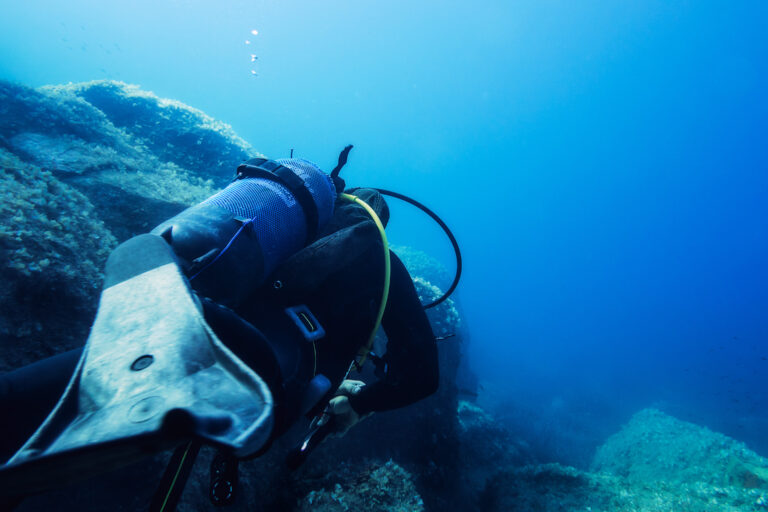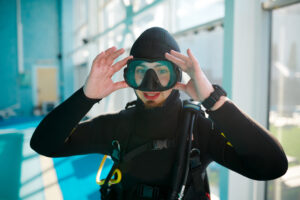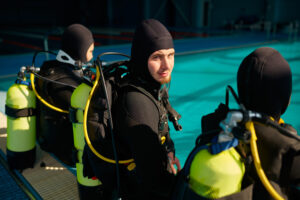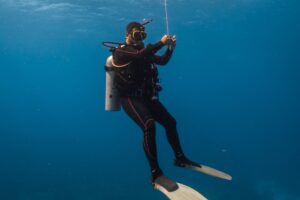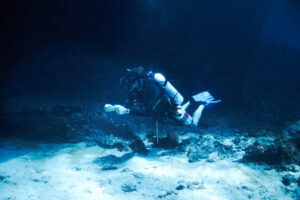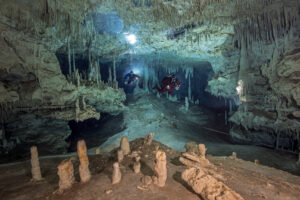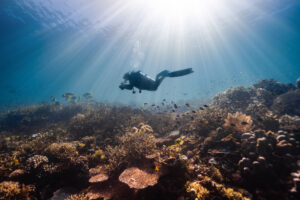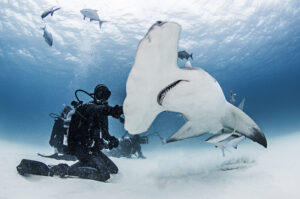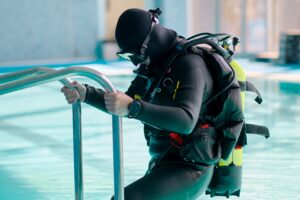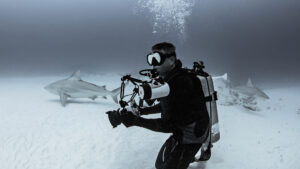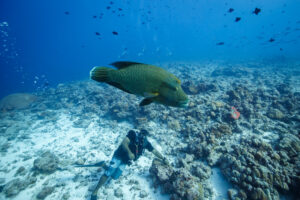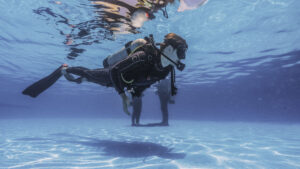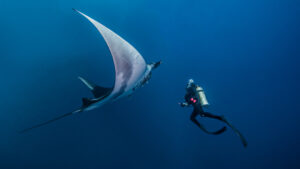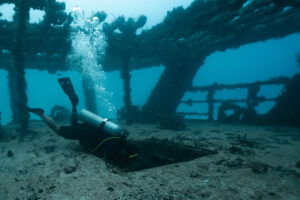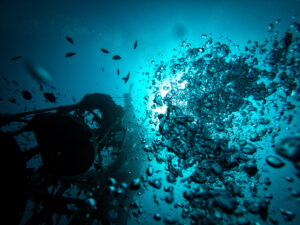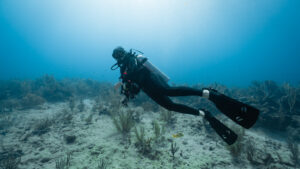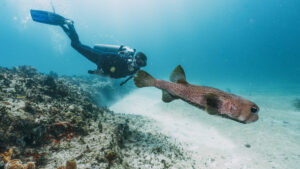What is the No-Decompression Limit (NDL)?
The No-Decompression Limit (NDL) is a fundamental concept in scuba diving, representing the maximum time a diver can spend at a specified depth without the need for mandatory decompression stops during ascent. Understanding and adhering to NDLs is essential for dive planning and ensuring the safety of divers. This entry will explore the concept of NDL, its importance, how it is calculated, and its implications for diving practices.
Concept and Importance
Scuba diving exposes divers to increased pressure as they descend underwater. This pressure causes inert gases, primarily nitrogen, to dissolve in the body tissues. As divers ascend, the pressure decreases, and the dissolved gases come out of solution, forming bubbles in the body. If the diver ascends too quickly, or spends too much time at depth, these bubbles can cause decompression sickness (DCS), a potentially severe and life-threatening condition.
The NDL serves as a guideline to help divers manage their time underwater, reducing the risk of DCS. By limiting the time spent at depth, divers can avoid mandatory decompression stops during ascent, which require them to pause at specific depths to allow the dissolved gases to safely leave the body. Staying within NDLs simplifies dive planning and reduces the risk of DCS, making recreational diving safer and more enjoyable.
Calculating NDL
The NDL for a given depth is calculated using dive tables or dive computers, which take into account the amount of inert gas absorbed at various depths and durations. Dive tables, such as the U.S. Navy Dive Tables or the Bühlmann Decompression Algorithm, provide conservative estimates of NDLs to ensure safety. Dive computers, on the other hand, perform real-time calculations of a diver’s NDL based on depth and time, allowing for more accurate and personalized dive planning.
Factors that affect NDL calculations include:
- Depth: As depth increases, the amount of gas dissolved in the body tissues also increases. Consequently, NDLs are shorter at greater depths.
- Previous dives: If a diver has completed one or more dives before the current dive, residual nitrogen from the previous dives will affect the NDL for the current dive.
- Altitude: Diving at higher altitudes affects the pressure gradients and requires adjustments to NDL calculations.
- Breathing gas mixture: Divers using enriched air nitrox (EAN) can extend their NDLs due to the lower nitrogen content in the breathing gas.
Adhering to NDLs
To safely adhere to NDLs, divers should follow these practices:
- Plan dives: Before entering the water, divers should plan their dives using dive tables, dive computers, or dive planning software. They should determine the maximum depth and duration of the dive, ensuring that they remain within the NDL for that depth.
- Monitor depth and time: While diving, divers should frequently check their depth and time, either with a dive computer or a depth gauge and timer. This monitoring will help them stay within their planned NDL.
- Ascend slowly: During ascent, divers should maintain a slow, controlled rate, generally not exceeding 30 feet (9 meters) per minute. This practice allows the dissolved gases to safely leave the body.
- Perform a safety stop: Even if not required by the NDL, it is recommended that divers perform a safety stop at a depth of 15-20 feet (4.5-6 meters) for 3-5 minutes to further reduce the risk of DCS.
Implications for Diving Practices
Understanding and adhering to NDLs have several implications for diving practices:
- Diving within NDLs is generally considered safer and more straightforward than diving with required
- decompression stops. By staying within NDLs, divers minimize their risk of DCS and simplify their dive planning.
- NDLs provide a framework for dive training and certification. Recreational diving agencies, such as PADI and NAUI, incorporate NDLs into their training materials and standards. These agencies also offer specialty courses on dive planning and enriched air nitrox, which can help divers extend their NDLs and enjoy longer bottom times.
- Technological advancements in dive computers have made adhering to NDLs easier and more accessible. Modern dive computers not only calculate NDLs in real-time but also adjust for factors such as altitude, previous dives, and breathing gas mixtures. They may also provide ascent rate indicators and alarms, making it simpler for divers to follow safe ascent procedures.
- NDLs influence the development of diving procedures and equipment. Decompression diving, which involves exceeding NDLs and making mandatory decompression stops, requires specialized training and equipment, such as redundant air sources and decompression gases. On the other hand, recreational diving within NDLs is more accessible, with fewer equipment requirements and a lower barrier to entry for new divers.
- NDLs inform the development of diving best practices and emergency procedures. For example, the Divers Alert Network (DAN) publishes guidelines on topics such as flying after diving, which are based on research into the relationship between NDLs, decompression stress, and the formation of gas bubbles in the body.
Key Takeaways
The No-Decompression Limit is a critical concept in scuba diving that helps divers manage their underwater time and reduce the risk of decompression sickness. By understanding and adhering to NDLs, divers can enjoy safer and more enjoyable experiences underwater. Furthermore, NDLs serve as a cornerstone for dive training, equipment development, and best practices in the diving community. As technology and our understanding of decompression science continue to evolve, the principles of NDLs will remain vital in shaping the future of scuba diving.

